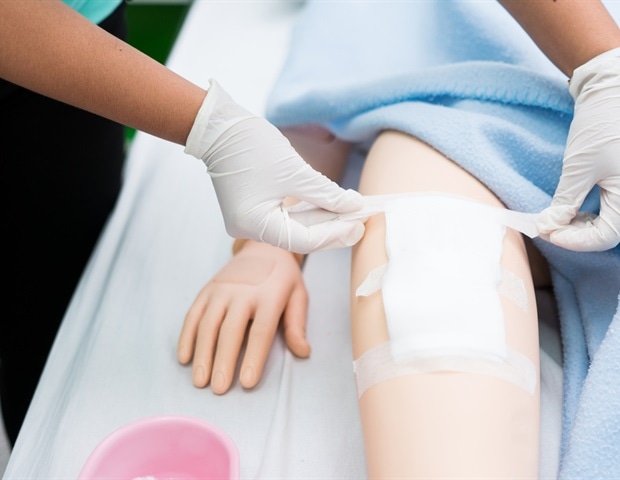Baxter International Inc. (NYSE: BAX) today announced the results of a phase III study evaluating the safety and efficacy of ARTISS [Fibrin Sealant (Human)] in 75 patients. The study compared the total drainage volume for each side of the face 24 hours after rhytidectomy or facelift surgery. These data were presented at the 90th annual meeting of the American Association of Plastic Surgeons (AAPS) on April 10 in Boca Raton, Florida.
“This study suggests that ARTISS can reduce drainage volumes 24 hours after rhytidectomy surgery,” said Steve Zvi Abrams, MD, medical director of Baxter’s BioScience business. “Within the reconstructive and cosmetic plastic surgeon community, there is considerable interest in products that may aid in tissue attachment.”
ARTISS is a fibrin sealant indicated for the attachment of autologous skin grafts to surgically prepared wound beds resulting from burns in adult and pediatric populations one year of age or older. The product is being studied to determine if it can support tissue attachment in patients undergoing facelift surgery.
In standard facelift surgery, sutures are used to close the flap of skin at its edge, which often leaves a gap underneath. In patients undergoing facelift surgery, postoperative drainage volume and incidence of hematoma or seroma (accumulation of blood or fluid under the skin, respectively) are important postoperative measures to assess recovery. In this study, ARTISS was sutured with the aim of improving flap adhesion as indicated by reduced postoperative drainage.
The multicenter, prospective, randomized phase III clinical study was performed in 75 patients. The study compared the total drainage volume, collected in a standardized fashion, for each side of the face 24 hours after surgery, using a split-face study design, in which one side of the patient’s face was sutured per standard of care while the other also received ARTISS Fibrous Sealant.
Adjunctive use of ARTISS reduced total drainage volumes at 24 hours immediately after rhytidectomy compared with standard care (mean ± SD volume of 7.7 ± 7.4 mL drained after 24 hours on the sides of the face that underwent treatment with ARTISS, compared with a mean volume of 20.0 ± 11.3 mL in the sides of the face receiving standard care alone) without the use of pressure pads, which were not allowed in the study. The investigators recorded the presence of hematoma/serum throughout the follow-up period. Seven hematoma/serum events occurred in a total of 5 patients on the sides of the face treated with ARTISS and 8 events occurred in a total of 8 patients on the sides of the face receiving standard care. The results of previous research suggest that postoperative drainage may be a surrogate marker of tissue adhesion and elimination of the “dead space” between the wound bed and the tissue flap.
On the sides of the face treated with ARTISS, a total of 11 facial adverse events (AEs) were reported in 6 patients. A severe AE, wound abscess with methicillin-resistant Staphylococcus aureus (MRSA) occurred. For the standard treated sides of the face, a total of 12 facial AEs occurred in 11 patients.
These results require review and validation by the United States Food and Drug Administration (FDA). Baxter currently has an efficacy supplement application pending with the FDA to extend the indication of use to facelift surgery.
Source:

